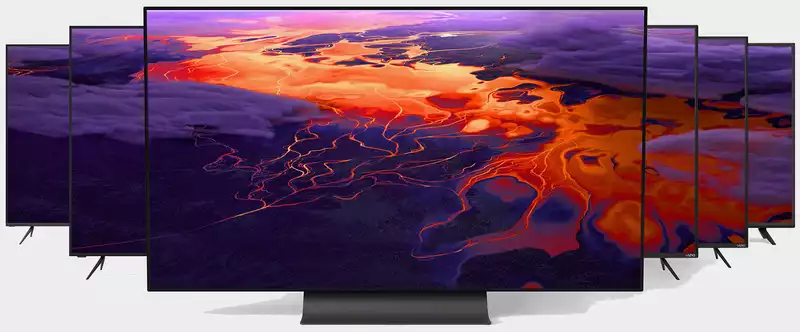Vizio has announced its "2021 TV Collection" and will launch the company's first OLED TVs in addition to a refresh of its regular LCD models. These will come in 65" and 55" sizes, at relatively attractive price points in the current OLED segment, and will be released around the same time as AMD's next-generation Navi GPU and Nvidia's Ampere.
Scheduled for release this fall, the 55-inch model will cost $1,200 and the 65-inch model will cost $2,000; LG's 65-inch CX model has an MSRP of $2,800 (retail price $2,400) and the 55-inch model is $1,800 (retail price $1,700).
One thing I have noticed over the years with Vizio TVs is that they frequently go on sale as well. I don't have a crystal ball, but there is a good chance that by the end of the year the 55- and 65-inch models will be even cheaper than their debut prices.
According to Tech Hive, both models have peak brightness in the neighborhood of 800 nits, fast 120 Hz refresh rates, and support for HDMI 2.1. They also check all the important HDR boxes, including Dolby Vision, HDR10+, and HLG.
As for gaming, Vizio is touting its new ProGaming Engine. This essentially boils down to support for variable refresh rates, FreeSync, and a "more intuitive AutoGaming mode that automatically optimizes the gaming experience." In other words, these TVs will enable low-latency modes when playing games, rather than having the player switch them themselves (as current TVs require).
My hope is that Vizio will do for OLED TVs what they are already doing for LCD TVs and usher in an era of greater affordability. As for timing, it couldn't be better: there has been a lot of hype surrounding AMD's so-called Big Navi GPU, and of course the Xbox Series X and PlayStation 5 will feature custom Navi GPUs.
Similarly, Nvidia is expected to announce a new generation of GeForce graphics cards based on the Ampere GPU architecture in the coming months.
A caveat when gaming on OLED displays is the inherent risk of burn-in. Static images such as heads-up displays (HUDs) and channel logos can be faintly and permanently burned in. This varies from panel to panel (CNET seems to suggest that these are using LG panels) and depends on the specific content.
Aside from that, OLED displays generally look great.


Comments